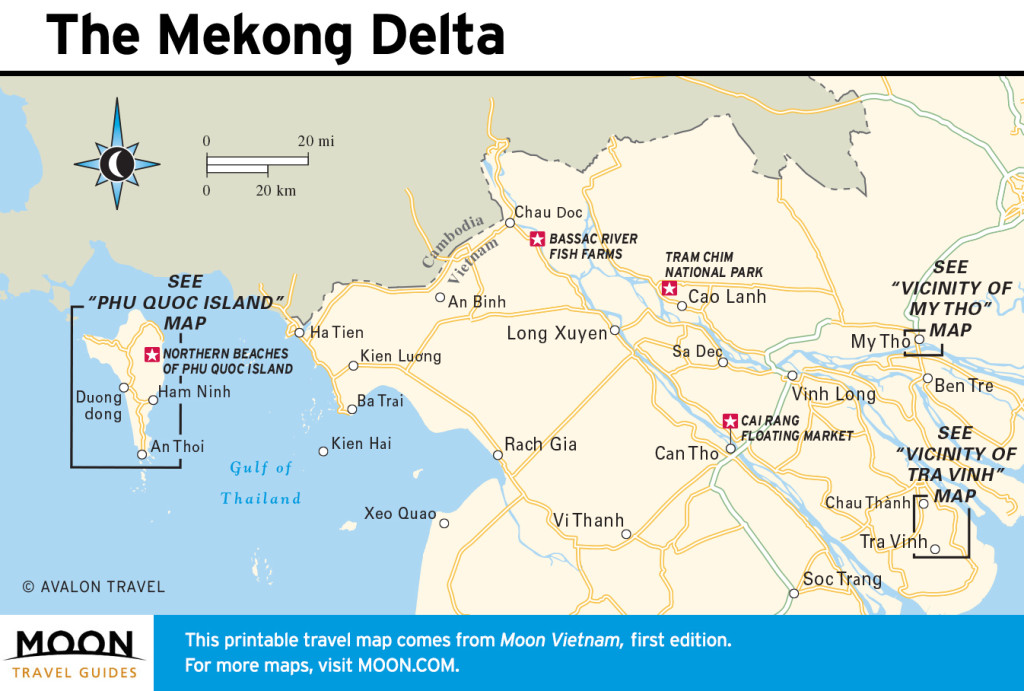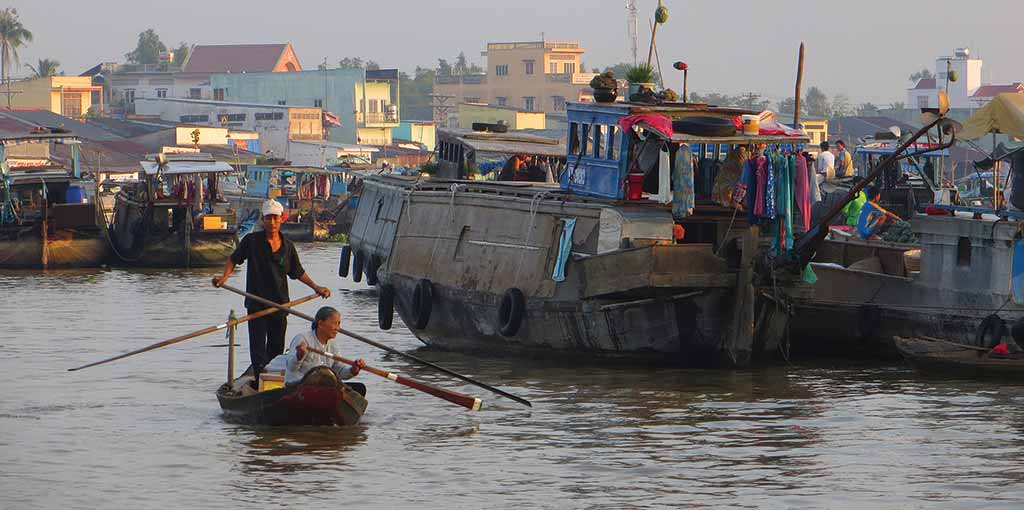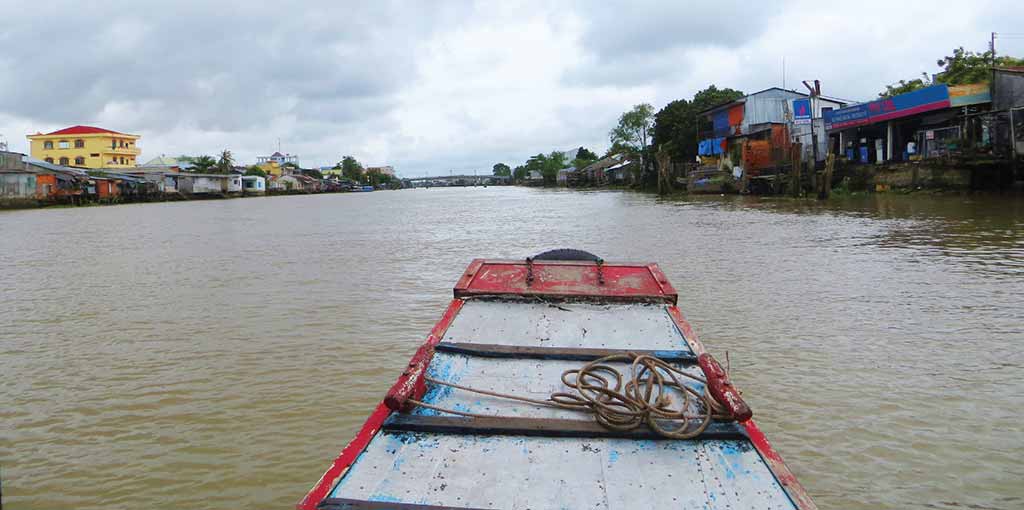At first glance, the geography of the Mekong Delta is almost incomprehensible. Awash with emerald green rice paddies and serpentine rivers, lush palms and tall, creaky cajuput trees, the entire region is made up of as much water as it is of earth. Its fertile farmland, which stretches south and west from Ho Chi Minh City all the way to the Cambodian border, rises tentatively from a maze of tributaries known to Vietnamese as the River of Nine Dragons. Here, amid flooded plains and shape-shifting islands, the mighty Mekong flows out to sea, providing one of the country’s most heavily populated areas with not only its defining geographic feature but an altogether different way of life.

The Mekong Delta
Exploring western Vietnam allows for more interaction with locals and a more authentic glimpse of daily life than many other destinations along the coast.On land, the region’s unparalleled annual rice harvest has earned it an affectionate nickname as Vietnam’s “rice bowl,” a major player in the second-largest rice-exporting nation in the world. But more than its farming exploits, life in the Mekong Delta revolves largely around water. At the mouth of one of Asia’s longest rivers—which winds from the Tibetan Plateau through China, Myanmar, Laos, Thailand, and Cambodia before arriving in southwestern Vietnam—local residents travel just as often by water as by land, navigating narrow, palm-fringed canals on wooden sampans or jetting off to another part of the coast via speedboat.The Delta’s low-lying terrain and a complex web of estuaries mean that it’s not uncommon for local families to anchor their house within the river or earn a living in one of the region’s famed floating markets. For many travelers, the Mekong’s main appeal lies here, in its verdant landscapes and unassuming pace. Beyond scenery, a diverse population only adds to the many intricacies of the Delta, as Vietnamese residents live alongside ethnic Chinese, Khmer, and Cham communities, each of whom bring their own distinct cultures and traditions to the area.

Vendors await their early-morning customers at Cai Rang Floating Market. Photo © Dana Filek-Gibson.
Tourism in the Mekong Delta is fairly spread out, with travelers venturing as near as the river islands between My Tho and Ben Tre or as far as the westernmost reaches of Ha Tien and Chau Doc. Those with an interest in local culture and a sense of adventure will appreciate the freedom of the Delta, where travelers can blaze their own trails without the confines that come with large foreign crowds. Exploring western Vietnam allows for more interaction with locals and a more authentic glimpse of daily life than many other destinations along the coast.
The region’s major attractions can be packed into a few days. Travelers in the Delta are free to pick and choose their destinations, as tourism here is not about specific sights or attractions so much as it is about experiencing the local way of life.
Those planning to spend more than a day in the Delta begin their journey in tourist-friendly Can Tho, using this hub to arrange bus transport to more remote destinations. Stay over night here to experience the city’s first-rate floating market.
The more popular tourist hubs are Chau Doc, Phu Quoc, and (to a lesser extent) Vinh Long. Allot 1-2 days each to visit Chau Doc and Vinh Long. Budget at least 2-3 days to visit Phu Quoc because it requires either more money (for the plane ticket) or more time to get there (by way of a speedboat), so it’s worth sticking around for an extra day or two.

Storefronts line the banks of the Co Chien River in Vinh Long. Photo © Dana Filek-Gibson.
Beyond the primary destinations, travelers can spend as little as a single day in the area or as long as a few weeks. Add an extra day each to explore the Khmer pagodas of Tra Vinh, bird-watch at Tram Chim National Park, and sightsee in Sa Dec, or tack on an extra day or two in towns like Rach Gia and Ha Tien to explore the surrounding area. It’s also possible to take day trips from Saigon to towns like My Tho, Ben Tre, or Vinh Long.
While the Mekong Delta is a popular destination as a whole, tourism here is spread out. Major destinations like Can Tho and Phu Quoc work well as tourist hubs, but most places west of Saigon have little tourism infrastructure. This means that English speakers and Western services are at a minimum, and you’ll need extra time and patience. Expect to have a few communication hiccups and to spend time on less-than-comfortable buses when traveling between many of the region’s cities.
The best time to visit is outside of the rainy season, as steady downpours bury much of the landscape from April to October and flooding can be extreme.
Excerpted from the First Edition of Moon Vietnam.